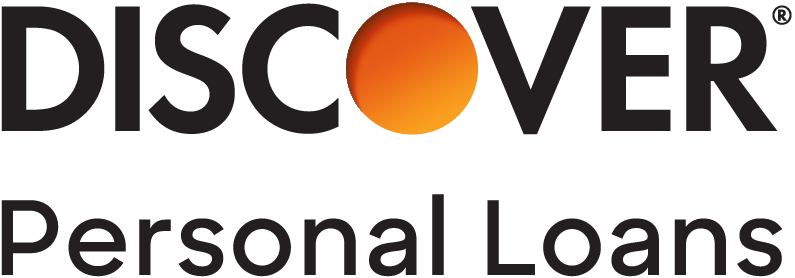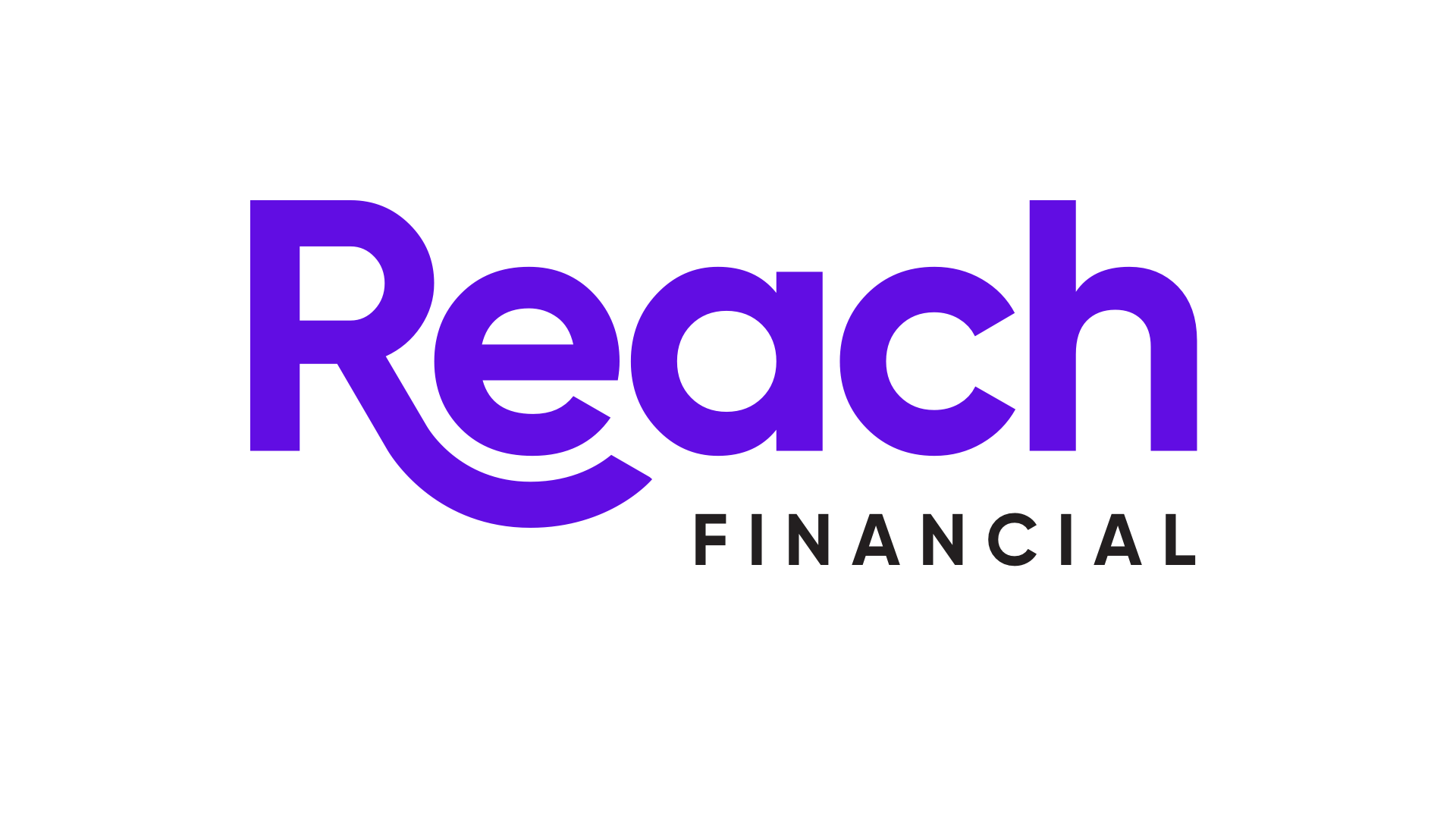Many, or all, of the products featured on this page are from our advertising partners who compensate us when you take certain actions on our website or click to take an action on their website. However, this does not influence our evaluations. Our opinions are our own. Here is a list of our partners and here's how we make money.
- No origination fee.
- Option to pre-qualify with a soft credit check.
- Fast funding.
- Mobile app to manage loan.
- May charge late fee.
- No co-sign or joint loan option.
- No rate discount.
- Minimum credit score: 660.
- Must be at least 18 years old.
- Must have a valid U.S. Social Security number.
- Minimum individual or household annual income of $25,000.
- Must have an active email address.
- Secured and joint loans.
- Multiple rate discounts.
- Mobile app to manage loan payments.
- Direct payment to creditors with debt consolidation loans.
- Long repayment terms on home improvement loans.
- Origination fee.
- No option to choose your payment date.
- Minimum credit score: 560.
- Minimum number of accounts on credit history: One account.
- Maximum debt-to-income ratio: 75%, including the loan you're applying for.
- Minimum length of credit history: Two years.
- Minimum income requirement: None. Lender accepts income from alimony, retirement, child support, Social Security and other sources.
- Joint loan option.
- Multiple rate discounts.
- Mobile app to manage loan.
- No option to choose initial payment date.
- High minimum loan amount.
- Must legally be an adult in your state.
- Must be a U.S. citizen, permanent resident or non-permanent resident with valid documentation.
- Must be employed, have sufficient income or have an offer of employment to start within 90 days.
- No fees.
- Rate discount for autopay.
- Long repayment terms on home improvement loans.
- Rate Beat program and Experience Guarantee.
- No option to pre-qualify with a soft credit check on its website.
- No direct payment to creditors with debt consolidation loans.
- High minimum loan amount.
- Must be a U.S. citizen or permanent resident.
- Must be at least 18 years old.
- Minimum credit score: 660.
- Must have several years of credit history with multiple account types and few or no delinquencies.
- Must have assets like retirement, investment and savings accounts.
- Accepts borrowers new to credit.
- Fast funding.
- Option to change your payment date.
- Option to pre-qualify with a soft credit check.
- Seven-day customer service availability.
- May charge origination fee.
- No joint or co-signed loans.
- No direct payment to creditors on debt consolidation loans.
- Must be a U.S. citizen or permanent resident.
- Must be at least 18 in most states.
- Must have a valid email address and Social Security number.
- Must have a bank account at a financial institution with a routing number.
- No bankruptcies in the last 12 months.
- No current delinquent accounts.
- Minimum credit score: None.
- Minimum annual income: $12,000; this lender accepts income from employment, alimony, retirement, child support, Social Security, rentals, trusts, pensions, disability and scholarships.
- Must have a full-time job or be starting a full-time job within six months.
- Option to pre-qualify with a soft credit check.
- Wide range of loan amounts.
- Unsecured and secured loan options.
- Direct payment to creditors with debt consolidation loans.
- No late fees.
- Origination fee.
- No rate discounts.
- No option to choose initial payment date.
- No mobile app to manage loan.
- Minimum credit score: 600.
- Must be a U.S. citizen.
- Minimum credit history: 24 months and 1 account.
- Minimum annual income: $3,500.
- Maximum debt-to-income ratio: 40% or 65% including mortgage.
- Fast funding.
- Option to pre-qualify with a soft credit check.
- Mobile app to manage loan.
- Wide range of repayment term options.
- Seven-day customer service availability.
- May charge an origination fee.
- No co-signed, joint or secured loans.
- No direct payment to creditors on debt consolidation loans.
- Must have a valid Social Security number.
- Bank account must be in good standing.
- Cannot be in active bankruptcy.
- Minimum credit score: 550.
- Minimum monthly net income: $1,200.
- Offers direct payment to creditors with debt consolidation loans.
- Fast funding.
- Offers multiple rate discounts.
- Offers free credit score access.
- Charges origination fee.
- Borrowers can choose from only two repayment term options.
- Minimum credit score: 560.
- Minimum number of accounts on credit history: 1 account.
- Maximum debt-to-income ratio: 75%, including mortgage and the loan you’re applying for.
- Minimum length of credit history: 2 years.
- Minimum income requirement: None. Lender accepts income from alimony, retirement, child support, Social Security and other sources.
- Option to choose and change your payment date.
- Joint and secured loans.
- Fast funding.
- Direct payment to creditors on debt consolidation loans.
- Rates are high compared to other lenders.
- Charges origination fee.
- No rate discounts.
- Limited loan amounts.
- Must have a taxpayer identification number.
- Must be 18 or older in most states.
- Minimum credit score: None.
- Minimum credit history: None; this lender prefers some minimal credit history.
- Minimum number of accounts on credit report: 1 active account.
- Minimum income: None, but borrowers must have sufficient disposable income to make the monthly loan payment. This lender accepts income from employment, alimony, retirement, child support and Social Security payments.
- Direct payment to creditors with debt consolidation loans.
- Fast funding.
- Customizable repayment terms.
- Hardship program may include payment pause up to 90 days.
- May charge an origination fee.
- Reports payments to only two of the three major credit bureaus.
- No joint, co-signed or secured loan options.
- Must be a U.S. citizen.
- Minimum credit score: 640; borrower average is 698.
- Minimum income: $1,000 per month after other monthly obligations. This lender accepts income from employment, retirement and Social Security payments.
- Minimum credit history: Three years and one account.
NerdWallet's guide to choosing the best personal loan
An unsecured personal loan can help you cover a large expense, pay for an emergency or consolidate your debt. You can use the funds for almost any purpose.
Each lender offers unique features and benefits, and some work better for certain borrowers and expenses than others. NerdWallet's personal loan guide will help you compare different lenders and determine which fits your goals.
- Why trust NerdWallet?
NerdWallet has rated and reviewed personal loans from more than 35 financial institutions. We collect over 50 data points from each lender and cross-check company websites, earnings reports and other public documents to confirm product details. We may also go through a lender's pre-qualification flow and follow up with company representatives. We do not receive compensation for our ratings. Read more about our personal loan star ratings methodology and our editorial guidelines.
On this page
What is a personal loan?
A personal loan is money you borrow from a bank, credit union or online lender. Loan amounts are from $1,000 to $100,000, and they’re typically repaid over a term of two to seven years. To qualify, lenders look at factors including your credit score, credit history and debt-to-income ratio.
» MORE: How to get a personal loan
Ways to use a personal loan
You can use personal loan funds for nearly any reason. Ideally, getting one positively impacts your overall financial health by helping you pay off debt faster, for example, or adding to the value of your home. Here are some top ways consumers use personal loans:
Debt consolidation: Use a debt consolidation loan to roll your debts into one monthly payment, potentially reducing the interest you pay and helping you pay it off faster.
Home improvement: Need to repair your roof, add a home office or install a swimming pool? Use a personal loan to finance home improvements.
Large expenses: You can use a personal loan to buy a boat, RV or other items with large price tags.
Life events: It can be expensive to finance your wedding or a vacation with a personal loan, but having one lump sum of money can help you stick to a budget.
Emergencies: Because personal loans are funded quickly, they can help cover an urgent home or car repair. Compare a loan with other low- or no interest options.
Personal loan interest rates
Personal loan annual percentage rates typically range from about 6% to 36%.
Lenders assess primarily your financial and credit information to determine your rate, but may consider other factors like whether you own your home, your education level and your work history. Consumer advocates say 36% is the highest annual percentage rate a loan can have and still be considered affordable.
Borrowers with good to excellent credit scores (690 and higher) typically get the lowest interest rates and can borrow larger amounts. They also have the most options when shopping for a loan.
Those with fair to bad credit (scores below 690) may have to look a little harder and pay a higher rate for a personal loan. Having steady income, low debt, a long credit history and a record of on-time payments will improve your chances of approval.
Current average personal loan rates
Interest rates are currently high for most types of financing, including personal loans. Here’s what average personal loan APRs currently look like:
Borrower credit rating | Score range | Estimated APR |
Excellent | 720-850. | 11.10%. |
Good | 690-719. | 13.74%. |
Fair | 630-689. | 17.51%. |
Bad | 300-629. | 21.83%. |
Source: Average rates are based on aggregate, anonymized offer data from users who pre-qualified through NerdWallet from June 1, 2024, through June 30, 2024. Rates are estimates only and not specific to any lender. The lowest credit scores — usually below 500 — are unlikely to qualify. Information in this table applies only to lenders with maximum APRs below 36%.
How does the economy affect personal loan rates?
Macroeconomic conditions help personal loan lenders determine their rates. For example, changes in the wider economy (like high inflation and Federal Funds rate increases) prompted lenders to tighten their underwriting standards in 2022 and 2023, and they’ve remained high since then.
- What to know about the Fed rate in 2024
The Fed rate hasn’t changed since July 2023, but the committee that sets the rate has indicated that it may lower it later this year.
If you have a personal loan, a lower Fed rate won’t affect your monthly payments because personal loan rates are fixed for the full repayment term.
If you’re considering a personal loan, a lower Fed rate could mean a chance at a modestly better rate later in the year.
Regardless of economic changes, the biggest factors that determine your personal loan interest rate are your creditworthiness, income and outstanding debts.
Best personal loan rates in July 2024
NerdWallet tracks and compares current APRs from more than 35 lenders. Here are lenders with the lowest personal loan rates this month.
Lender | APR range | Loan amount | Min. credit score |
|---|---|---|---|
8.99% - 29.99%. | $5,000 - $100,000. | None. | |
11.49% - 20.49%. | $2,000 - $30,000. | 720. | |
7.99% - 24.99%. | $2,500 - $40,000. | 660. | |
6.99% - 25.49%. | $5,000 - $100,000. | 660. | |
7.80% - 35.99%. | $1,000 - $50,000. | None. | |
7.49% - 30.49%. | $1,000 - $35,000. | None. | |
9.12% - 29.99%. | $2,000 - $45,000. | 640. | |
11.72% - 17.99%. | $5,000 - $40,000. | 640. | |
7.99% - 17.99%. | $2,000 - $50,000. | 700. | |
7.49% - 23.74%. | $3,000 - $100,000. | None. |
Expert take: Can you get a low personal loan rate in 2024?
Though average personal loan rates aren’t as low as they were in 2021, borrowers can still get low personal loan rates in 2024. The key is to be able to show strong credit, solid income and keep your other debts low. You also don’t need to accept the first loan you’re offered. It might feel like lenders have the upper hand when you’re applying, but consumers can pre-qualify and rate shop with multiple lenders before they commit to one offer.

— Annie Millerbernd, Personal Loans Assistant Assigning Editor
Personal loan calculator
Use this calculator to estimate monthly payments for a personal loan, based on the loan amount, rate and term. See how different rates and terms affect the monthly payment as well as the payoff date.
Total principal
$10,000.00Total interest payments
$2,748.23Total loan payments
$12,748.23Payoff date
07 / 2029
| Payment date | Principal | Interest | Monthly payment | Principal balance |
|---|---|---|---|---|
| Jul 2024 | $129.14 | $83.33 | $212.47 | $9,870.86 |
| Aug 2024 | $130.21 | $82.26 | $212.47 | $9,740.65 |
| Sep 2024 | $131.30 | $81.17 | $212.47 | $9,609.35 |
| Oct 2024 | $132.39 | $80.08 | $212.47 | $9,476.96 |
| Nov 2024 | $133.50 | $78.97 | $212.47 | $9,343.46 |
| Dec 2024 | $134.61 | $77.86 | $212.47 | $9,208.85 |
| Jan 2025 | $135.73 | $76.74 | $212.47 | $9,073.12 |
| Feb 2025 | $136.86 | $75.61 | $212.47 | $8,936.26 |
| Mar 2025 | $138.00 | $74.47 | $212.47 | $8,798.26 |
| Apr 2025 | $139.15 | $73.32 | $212.47 | $8,659.11 |
| May 2025 | $140.31 | $72.16 | $212.47 | $8,518.80 |
| Jun 2025 | $141.48 | $70.99 | $212.47 | $8,377.32 |
| Jul 2025 | $142.66 | $69.81 | $212.47 | $8,234.66 |
| Aug 2025 | $143.85 | $68.62 | $212.47 | $8,090.81 |
| Sep 2025 | $145.05 | $67.42 | $212.47 | $7,945.76 |
| Oct 2025 | $146.26 | $66.21 | $212.47 | $7,799.51 |
| Nov 2025 | $147.47 | $65.00 | $212.47 | $7,652.03 |
| Dec 2025 | $148.70 | $63.77 | $212.47 | $7,503.33 |
| Jan 2026 | $149.94 | $62.53 | $212.47 | $7,353.39 |
| Feb 2026 | $151.19 | $61.28 | $212.47 | $7,202.20 |
| Mar 2026 | $152.45 | $60.02 | $212.47 | $7,049.74 |
| Apr 2026 | $153.72 | $58.75 | $212.47 | $6,896.02 |
| May 2026 | $155.00 | $57.47 | $212.47 | $6,741.02 |
| Jun 2026 | $156.30 | $56.18 | $212.47 | $6,584.72 |
| Jul 2026 | $157.60 | $54.87 | $212.47 | $6,427.12 |
| Aug 2026 | $158.91 | $53.56 | $212.47 | $6,268.21 |
| Sep 2026 | $160.24 | $52.24 | $212.47 | $6,107.98 |
| Oct 2026 | $161.57 | $50.90 | $212.47 | $5,946.41 |
| Nov 2026 | $162.92 | $49.55 | $212.47 | $5,783.49 |
| Dec 2026 | $164.27 | $48.20 | $212.47 | $5,619.22 |
| Jan 2027 | $165.64 | $46.83 | $212.47 | $5,453.57 |
| Feb 2027 | $167.02 | $45.45 | $212.47 | $5,286.55 |
| Mar 2027 | $168.42 | $44.05 | $212.47 | $5,118.13 |
| Apr 2027 | $169.82 | $42.65 | $212.47 | $4,948.31 |
| May 2027 | $171.23 | $41.24 | $212.47 | $4,777.08 |
| Jun 2027 | $172.66 | $39.81 | $212.47 | $4,604.42 |
| Jul 2027 | $174.10 | $38.37 | $212.47 | $4,430.32 |
| Aug 2027 | $175.55 | $36.92 | $212.47 | $4,254.76 |
| Sep 2027 | $177.01 | $35.46 | $212.47 | $4,077.75 |
| Oct 2027 | $178.49 | $33.98 | $212.47 | $3,899.26 |
| Nov 2027 | $179.98 | $32.49 | $212.47 | $3,719.28 |
| Dec 2027 | $181.48 | $30.99 | $212.47 | $3,537.81 |
| Jan 2028 | $182.99 | $29.48 | $212.47 | $3,354.82 |
| Feb 2028 | $184.51 | $27.96 | $212.47 | $3,170.31 |
| Mar 2028 | $186.05 | $26.42 | $212.47 | $2,984.25 |
| Apr 2028 | $187.60 | $24.87 | $212.47 | $2,796.65 |
| May 2028 | $189.17 | $23.31 | $212.47 | $2,607.49 |
| Jun 2028 | $190.74 | $21.73 | $212.47 | $2,416.75 |
| Jul 2028 | $192.33 | $20.14 | $212.47 | $2,224.42 |
| Aug 2028 | $193.93 | $18.54 | $212.47 | $2,030.48 |
| Sep 2028 | $195.55 | $16.92 | $212.47 | $1,834.93 |
| Oct 2028 | $197.18 | $15.29 | $212.47 | $1,637.75 |
| Nov 2028 | $198.82 | $13.65 | $212.47 | $1,438.93 |
| Dec 2028 | $200.48 | $11.99 | $212.47 | $1,238.45 |
| Jan 2029 | $202.15 | $10.32 | $212.47 | $1,036.30 |
| Feb 2029 | $203.83 | $8.64 | $212.47 | $832.47 |
| Mar 2029 | $205.53 | $6.94 | $212.47 | $626.93 |
| Apr 2029 | $207.25 | $5.22 | $212.47 | $419.69 |
| May 2029 | $208.97 | $3.50 | $212.47 | $210.71 |
| Jun 2029 | $210.71 | $1.76 | $212.47 | $0.00 |
How to compare personal loans
Rates, terms, funding time and other features vary, so take the time to compare loans from multiple lenders. Here are the most important considerations:
APR
A loan’s annual percentage rate represents the interest rate plus any fees the lender charges. When comparing offers, APR tells you which is the least expensive overall. It also provides an apples-to-apples comparison across financial products, so you can compare the cost of a personal loan to a credit card, for example.
Monthly payment
Even if a loan has a low APR, you need room in your budget to repay it each month. Your monthly payment is determined by the loan amount, interest rate and repayment term. A shorter term may mean higher monthly payments, but you’ll pay less in interest over the life of the loan. Use the personal loan calculator below to see how the rate and repayment terms affect the monthly payment.
Fees
The most common fees on personal loans are late and origination fees. An origination fee can be 1% to 10% of your loan amount, and lenders typically deduct the fee before sending you the funds. If your lender charges this fee, make sure the final loan amount will be enough to cover your expenses.
Funding time
Many lenders can fund a loan within a day or two of approval, but some take up to a week to send you the money. If you need cash fast, compare quick personal loans to find a lender that offers same- or next-day funding.
Payment flexibility
Some lenders let you choose your initial payment date and allow multiple changes during repayment, while others require you to pay on the same date each month for the life of the loan. Since you could be repaying this loan for years, consider whether you’ll want the option to change your due date, skip a payment or pause payments during a hardship.
Other consumer-friendly features
If you have a couple of competitive offers, consider other common personal loan features to break the tie. Some lenders offer rate discounts, no fees, extra long repayment terms on home improvement loans or direct fund transfers to other creditors on debt consolidation loans.
Personal loan pros and cons
Pros
- Few restrictions on loan purpose.
- Spread out a large expense.
- Consolidate high-interest debt.
- Predictable monthly payments.
- Fast funding.
- No collateral required.
- Rates can be lower than credit cards.
- On-time payments help build credit.
Cons
- Strong credit and income needed for lowest rates.
- Increase your debt load.
- One-time lump sum; no continual borrowing.
- Lenders may charge origination fees.
- Rates may be higher than other financing options.
- Potentially high monthly payments.
- Missed payments negatively impact credit.
Before you get a personal loan
- 1. Check your credit
Learn about your personal loan options based on your credit score. This will give you an idea of what rate and payment to expect as you shop for loans. Then, review your credit report for errors or accounts that may be weighing on your score and address them before applying. For example, a past-due account could be a reason a lender denies your application. You might decide to postpone getting a loan and instead take steps to build your credit to get a lower rate or a larger loan.
- 2. Review your debt-to-income ratio
A low DTI shows lenders that you have ample income for new loan payments. If yours is high (usually above 40%), pay down debt before you apply to improve your chance of qualifying. Make sure to include all sources of income on an application.
- 3. Compare your options
Interest rates on personal loans for excellent credit start around 6% APR, but if you can qualify for a 0% interest credit card — and pay off the balance within the promotional period — then you may be better off with the credit card. Here's how to compare personal loans and credit cards.
- 4. Consider a co-applicant
Borrowers with blemished credit can add a co-signer or co-borrower with better credit and higher income for a better chance of qualifying or a potentially lower rate. Both co-signers and co-borrowers are responsible for repaying the debt if the primary borrower misses payments.
- 5. Weigh secured personal loans
Using a car, savings account or other asset as collateral may get you a lower rate. The risk is losing your asset if you default on a secured personal loan.
- 6. Assess your overall financial well-being
Personal loans work best as part of a balanced financial plan. Borrow money to consolidate debt if it means you’ll get out of debt more quickly. But don’t borrow if it only adds financial strain. If your current debt is overwhelming, investigate your debt-relief options.
Where to get a personal loan

Online lenders offer a convenient way to find and compare personal loans from anywhere. Some online lenders offer low rates to good- and excellent-credit borrowers, while others can approve borrowers with poor or limited credit.

Some national banks offer personal loans with competitive rates and in-person support. Banks may offer competitive rates — and rate discounts if you’re already a customer — but they typically have tougher eligibility requirements than online lenders.

Credit union loans may carry lower rates than banks and online lenders, especially for those with fair or bad credit, and loan officers may be more willing to consider your total financial picture.
» MORE: Where to get a personal loan
How to get a personal loan
Calculate your payments. Review your budget to see how much room you have for monthly loan payments. Then, use a personal loan calculator to see what loan amount, rate and repayment term will get you affordable monthly payments.
Pre-qualify and compare offers. Most online lenders allow you to pre-qualify without affecting your credit score. Check your rate with multiple lenders to find the best offer. If you have good credit and an existing banking relationship, take a pre-qualified loan offer to your bank and ask if they’ll beat it. Once you have multiple loan offers in hand, compare the loan features and fine print, including total costs and any penalties.
Gather documents. Most personal loan applications require documents, including W-2s, pay stubs or bank statements to prove your income. You’ll also need a government-issued ID such as a driver’s license or passport and your Social Security number. Gather these documents before you apply to speed up the process.
Apply. The final step is to submit your personal loan application. Applying involves a hard credit check that can temporarily lower your credit score. Depending on the lender, you should receive your funds within a few days.
How to manage a personal loan
Even before you receive your loan, make a plan to pay it off, ensuring you can manage on-time monthly payments for the life of the loan — whether that's two or seven years. Missing even one loan payment can hurt your credit score, and defaulting on the loan can mean late fees and collections calls.
If you face a financial setback while paying off your loan, reach out to your lender and ask about a hardship option. Some lenders may allow you to defer loan payments for a specified time.
Frequently asked questions
- How do personal loans work?
Personal loans come in a lump sum and are repaid, with interest, in equal monthly installments over a term that’s usually a year or longer. Personal loans have fixed interest rates, so your monthly payment never changes.
To approve you for a personal loan, lenders consider your creditworthiness and financial information like your income and outstanding debts.
- Which banks offer personal loans?
Large national banks, including Wells Fargo, U.S. Bank, Citi and Discover offer personal loans. Local banks and regional banks like TD Bank also offer personal loans. Major banks that don’t offer personal loans include Chase, Capital One and Bank of America.
- How long does it take to get a personal loan?
From application to funding, it can take a week or less to get a personal loan. Applications can take minutes if you have the correct documents when you apply, and many lenders can approve an application the same day. Once approved, personal loans can take a day to a week to be funded.
- How does a personal loan affect your credit score?
When you get a personal loan, a lender will pull your credit and cause your credit score to drop by a few points. The biggest impact to your score happens during repayment: On-time payments help build credit, while missed payments hurt your score.
Personal loans rating methodology
NerdWallet writers and editors conduct an annual comprehensive fact check and update of our lender reviews, but also make updates throughout the year as necessary.
Our star ratings award points to lenders that offer consumer-friendly features, including: soft credit checks to pre-qualify, competitive interest rates and no fees, transparency of rates and terms, flexible payment options, fast funding times, accessible customer service, reporting of payments to credit bureaus and financial education. We also consider regulatory actions filed by agencies like the Consumer Financial Protection Bureau. We weigh these factors based on our assessment of which are the most important to consumers and how meaningfully they impact consumers’ experiences.
This methodology applies only to lenders that cap interest rates at 36%, the maximum rate most financial experts and consumer advocates agree is the acceptable limit for a loan to be affordable.



